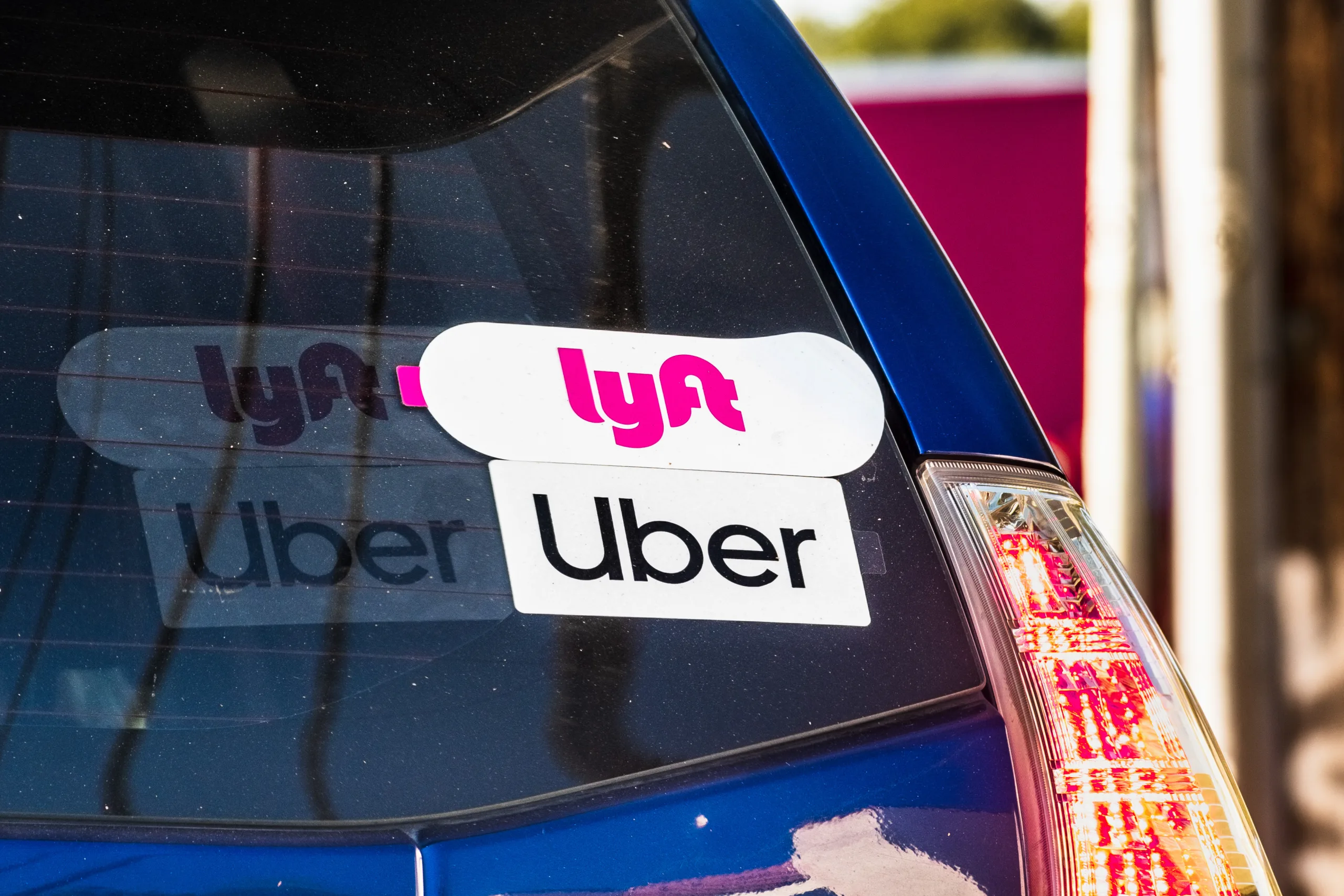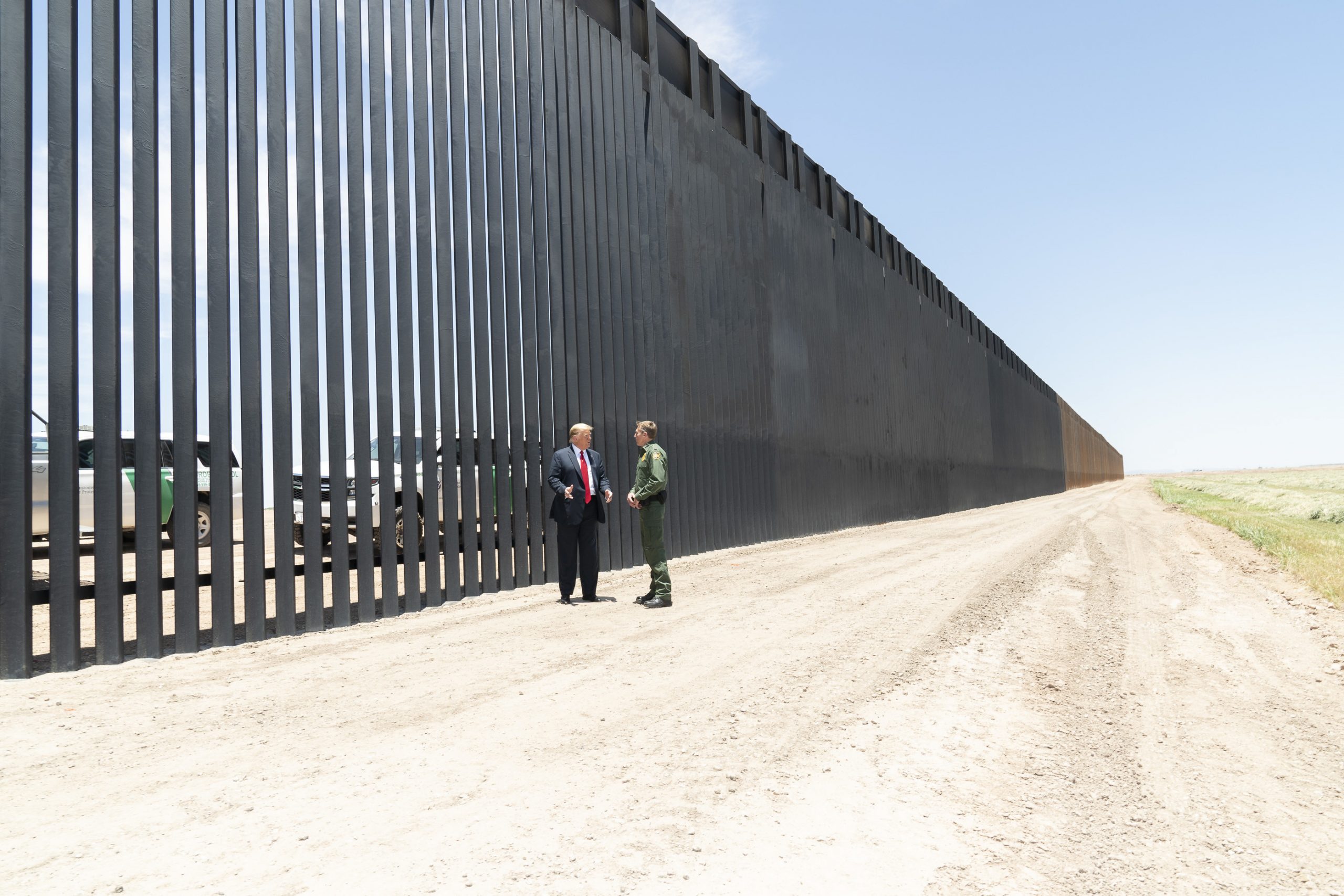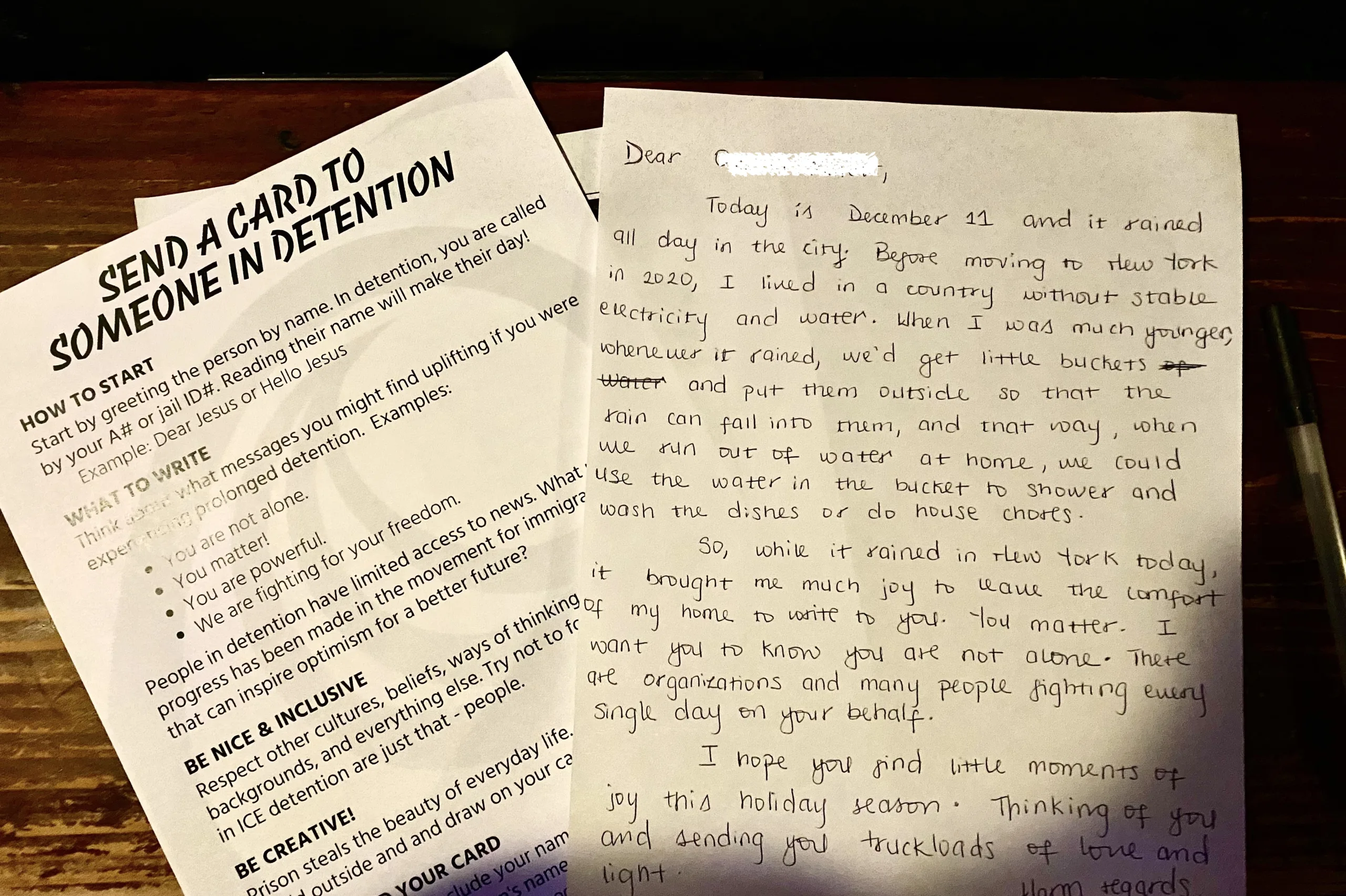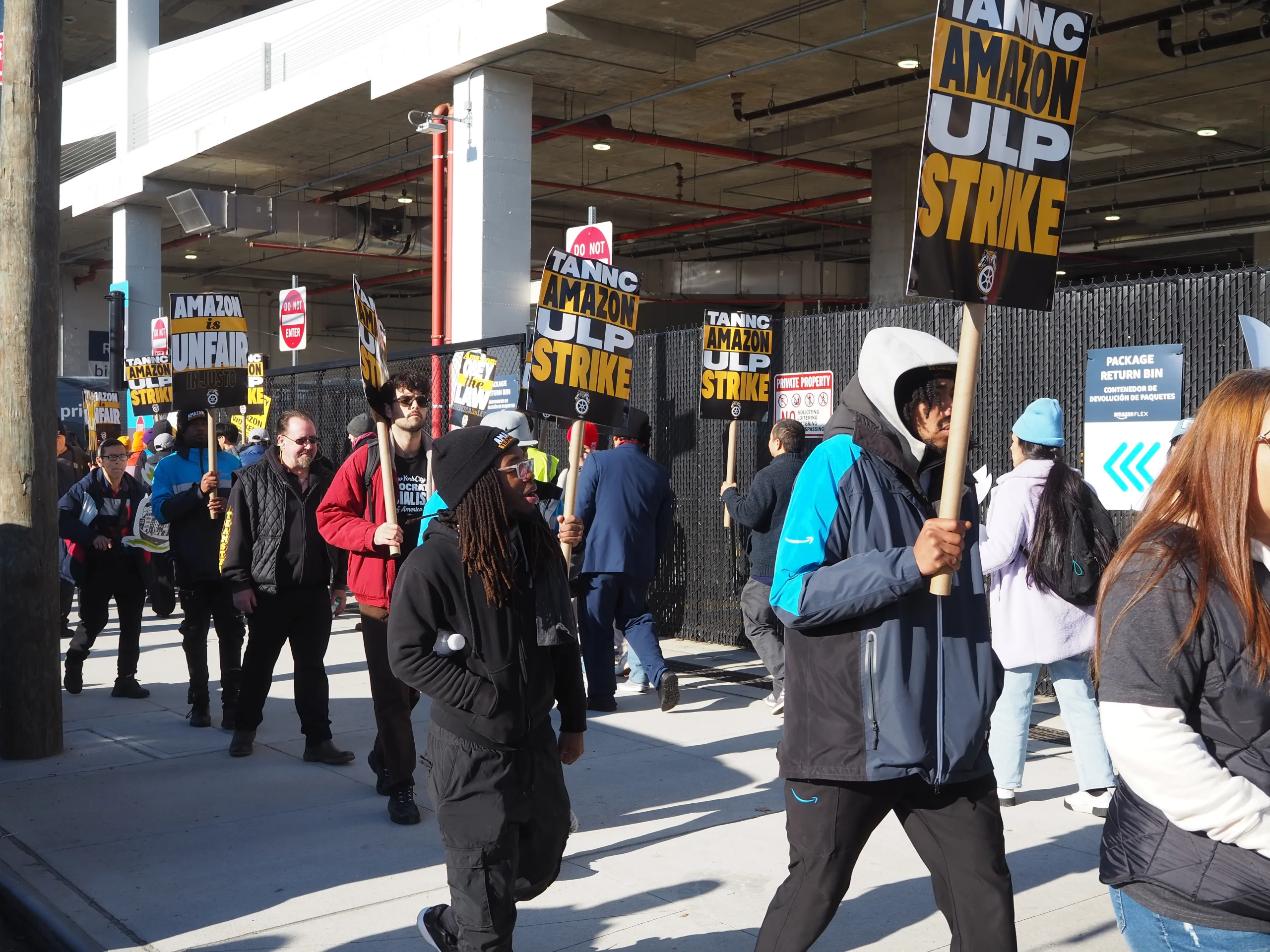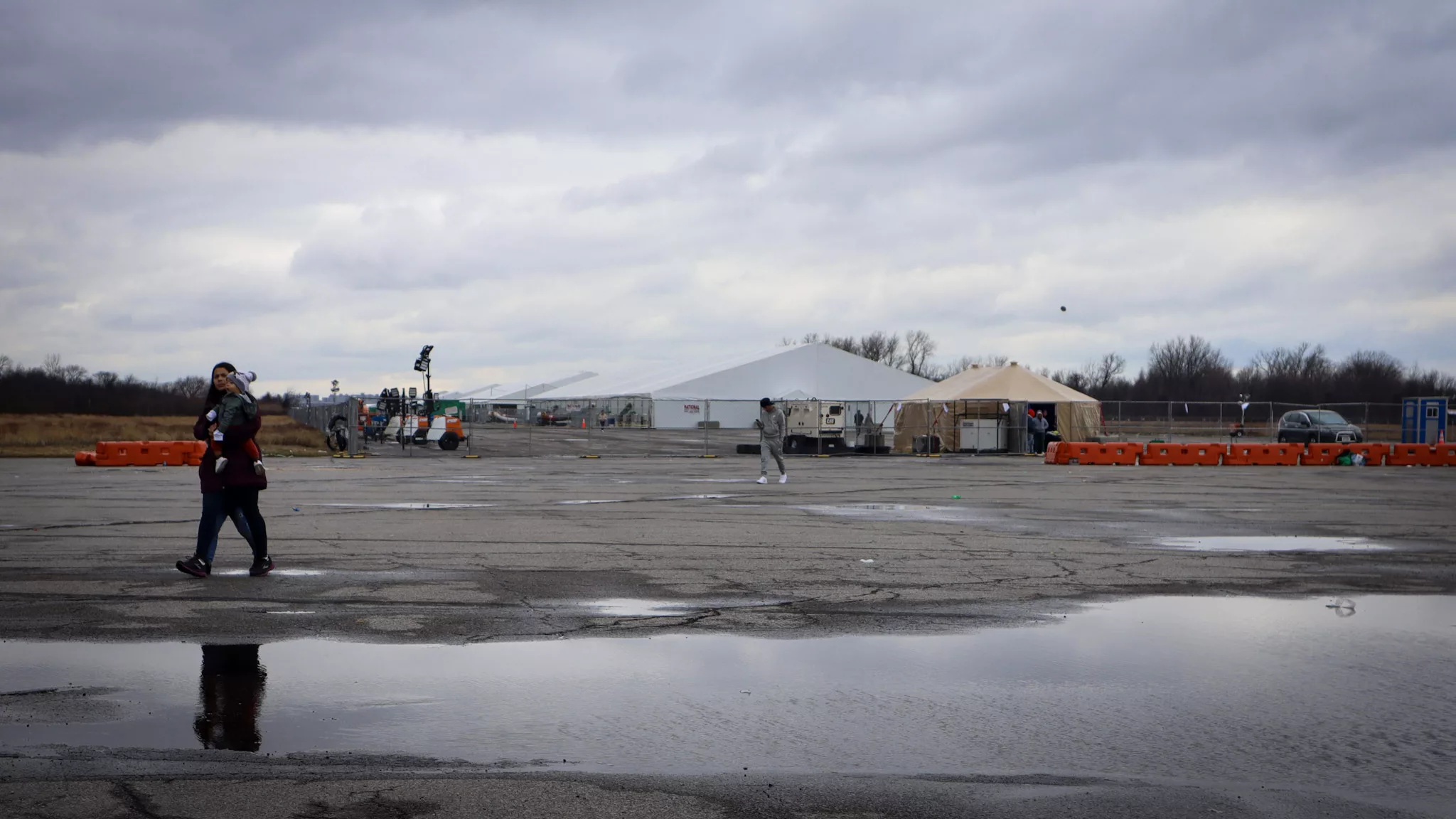Facing a mounting movement by Uber and Lyft drivers demanding the city intervene on unfair deactivations, Mayor Eric Adams announced Wednesday that his administration had reached an agreement with Uber and Lyft to significantly reduce lockouts.
Although the Independent Drivers Guild (IDG) celebrated the mayor’s plan, its rival union, the New York Taxi Workers Alliance (NYTWA), has called it a “corporate giveaway.”
According to the mayor’s press release, under the agreement, Uber would immediately begin phasing out the lockouts for its drivers, with a goal of eliminating lockouts by Labor Day.
“Our Uber and Lyft drivers deliver us where we need to go, and now it’s time for us to deliver for them by helping them earn a decent wage,” said Mayor Adams in a statement. “We will always go to bat for working-class New Yorkers, and the deal we’ve secured today will put money in the pockets of hard-working drivers and help them continue to afford to live in the greatest city in the world.”
Also Read: Uber and Lyft Drivers Fight Back Against Accounts Being Randomly Deactivated
Both Uber and Lyft also agreed to limit the number of new drivers on the road by pausing their onboarding of new drivers. Lyft also agreed to minimize lockouts during the onboarding pause. In exchange for voluntarily agreeing to ease lockouts, the apps avoid further city regulations.
“Lyft supports an environment that allows New York City drivers to earn whenever and however they want while driving on the Lyft platform,” said Megan Sirjane-Samples, director of public policy at Lyft, in a statement shared with Documented. “We never want to enact supply controls, and we will continue to work with TLC in the best interest of drivers.”
“This agreement will allow us to immediately reduce and aim to soon eliminate platform access restrictions for existing drivers,” said Josh Gold, Uber’s senior director of policy and communications, told Documented.
Also Read: Uber and Lyft Wage Theft Settlement Explained
Last year, Documented was among the first to report on the growing crisis of unfair deactivations of Uber and Lyft, as drivers were finding themselves blocked from working on the apps without any explanation and little recourse to appeal.
The roots of the crisis date back to 2018, when former Mayor Bill de Blasio enacted a first-of-its-kind rule mandating ride-share apps pay drivers a minimum rate of $17.22 per hour for the time they wait between trips.
The formula the city uses to determine the minimum per-trip payment for a driver takes into account a driver’s total working time, which includes the time spent driving a passenger, otherwise known as the “utilization rate,” as well as the time spent waiting for a new fare, and the time spent traveling to pick up a passenger.
To determine an individual driver’s utilization rate, the NYC Taxi & Limousine Commission (TLC) divides the amount of time a driver spends with a passenger by the total amount of time that a driver is available to accept a new fare. If a driver has to wait between trips, Uber and Lyft are required to pay that driver the mandated minimum.
Both Uber and Lyft have blamed the city’s regulation structure for forcing them to lock out drivers in an attempt to reduce the number of drivers they would be required to pay the minimum rate. In response, Uber sent emails urging drivers to contact the TLC about the effects the lockouts have had on their earning ability.
According to Bhairavi Desai, the executive director of the NYTWA, the TLC relented to the app’s complaints in 2023 by adjusting the pay formula that Uber and Lyft are required to use when calculating driver earnings on each trip, effectively reducing driver compensation by nearly $5,000 per year. Still, lockouts continued, only getting worse in 2024.
Read More: Uber and Lyft Wage Theft Settlements: AG Warns Against Scams
In some instances, drivers were locked out mid-shift, causing many of the mostly immigrant workforce to lose their only source of earning a livelihood. Desai estimates that thousands of drivers have been locked out.
“At the time, Uber testified that they were satisfied with the change and that it would prevent them from resorting to more dramatic actions, like lockouts, to protect their bottom line,” Desai said in a statement shared with Documented.
Both the IDG and the NYTWA have been leading protests, caravans, and rallies demanding an end to the lockouts, with the NYTWA threatening a mass strike if the lockouts continued unabated. The mayor’s announcement Wednesday was celebrated as a well-earned victory by the IDG.
“Independent Drivers Guild members have been fighting around the clock to end the app lockouts imposed by Uber and Lyft,” said Aziz Bah, director of the IDG, in a statement. “We want to thank Mayor Adams and Commissioner Do for listening to drivers and acting to significantly reduce these unfair lockouts as we continue the fight to protect fair pay for drivers and permanently end lockouts.”
However, not all drivers were happy. Many took to social media and driver group chats to lambast the agreement for not going far enough, as well as to criticize the IDG for selling drivers out. The IDG has long been viewed with suspicion by many drivers because the union is partly funded by Uber.
Desai of the NYTWA was among the agreement’s most vocal critics.
“First of all, this ‘deal’ won’t resolve the immediate crisis that drivers are facing,” she said in a statement. “Under its terms, lockouts will continue for all drivers until at least the fall, and they’ll be especially pronounced for drivers who rely exclusively on Lyft for income. There’s no compensation for income that drivers have already lost, and no guarantees that lockouts won’t resume at some point even this year at full scale.”
She also criticized the IDG for supporting the agreement, calling them a “company union.”
“IDG was started with Uber’s money and its role is to be the driver’s face of Uber’s interests,” she said. “They earned their money today by propping up a phony deal that doesn’t actually end lockouts, keeps drivers underpaid and gives Uber a free pass for months of low pay and evading a city rule to pay drivers for all hours worked.”
Aziz Bah, the IDG’s director, takes issue with being labeled as a company union, insisting that his union, not the NYTWA, is the only labor organization that truly represents the interests of rideshare drivers.
“IDG is who Uber and Lyft drivers go to with problems day in and day out, not the Taxi Workers Alliance,” he said in a statement shared with Documented. “The city’s rideshare drivers have been desperate for an end to the lockouts. We hear from them every day. NYTWA represents yellow taxi medallion owners and that’s their priority. Time and again they take positions that hurt rideshare drivers.”
Still, most concerning to NYTWA is their view that the city is attempting to prevent a full-scale driver revolt by placating drivers with a short-term solution that in their view doesn’t address the systemic problem of deactivation.
“The real goal of this phony deal is to try to demobilize the thousands of drivers who’ve made it clear that they’re ready to strike,” Desai said. “Unfortunately, the city seems more interested in a photo-op and an easy press victory than actually fighting for drivers. By lending its name to this deal, City Hall is turning its back on drivers and letting these companies walk all over them.”
Undeterred, the NYTWA is continuing to organize and mobilize drivers to end unjust lockouts once and for all. Desai says that the drivers are willing to strike if they need to.
